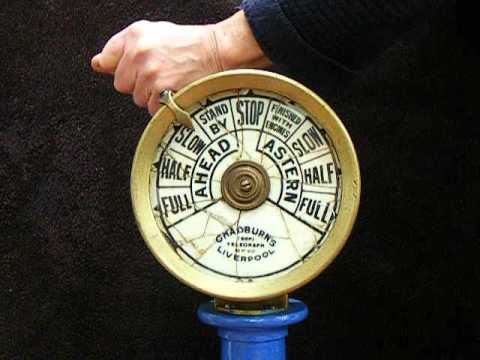|
The Correct answer is C - The current will push the ship to the North and the wind will slow the ship's progress. Due to the wind blowing directly at the ship's bow, the ship will be moving slower than it's indicated speed. That means the current havs more time to push the ship off course - to the North. The navigator will have to adjust his course for this double effect. Engineering Test  The bridge of the ship is connected to the engineering department by ship's telegraphs. These have a series of settings such as Full Speed - Half Speed - Slow - Stand By - Stop - Ahead and Astern (Reverse). When the captain makes a change on the telegraph on the bridge, the telegraph signals the same change in the engine room. Thanks to some clever gearing a ship's propeller can can reverse its rotation very quickly, without affecting the running of the steam turbines. Destroyers typically had two propellers with independent shafts, so changing the speed of one shaft can help to turn the ship quickly. What would be the combination of telegraph orders for an emergency turn to Starboard? a. Port shaft Ahead Full, Starboard shaft Astern Full b. Port Shaft Astern Full, Starboard shaft Ahead Full c. Port shaft Stop, Starboard shaft Ahead Full WARNING!!!! Such extreme commands may allow the tightest, fastest turn possible, but they can cause permanent damage to the propellers, shafts, and engine gearing, not to mention throwing everything on board violently to one side. |